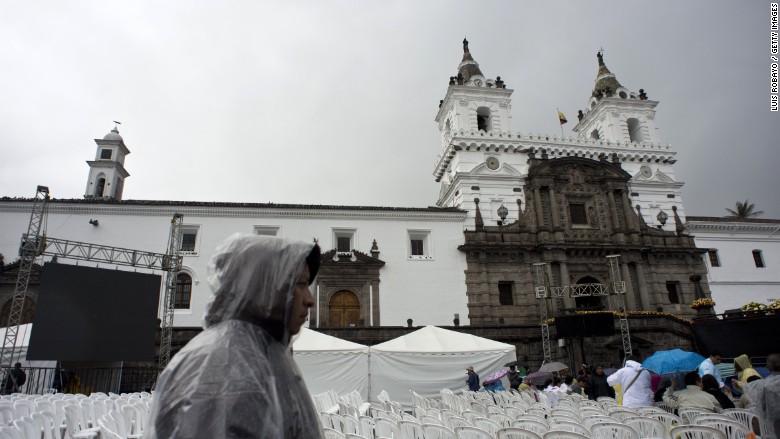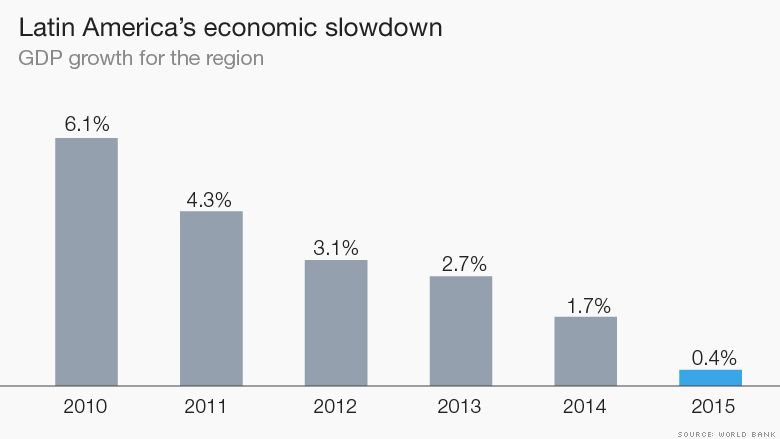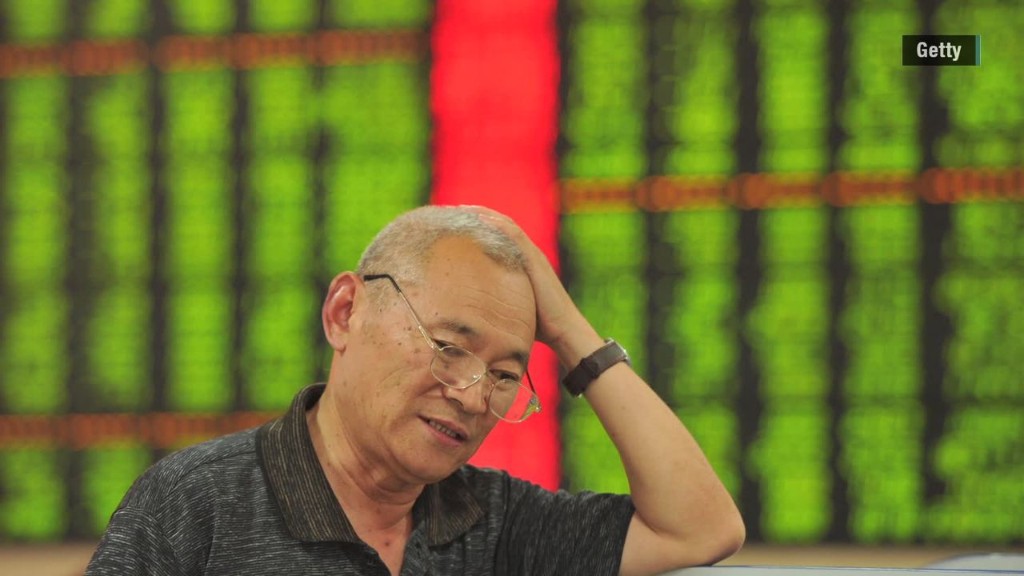
Greece needs a bailout and China's stock market is in meltdown mode. But the global economy has another rising red flag: Latin America.
Every major Latin American economy is slowing down or shrinking. The World Bank predicts this will be Latin America's worst year of growth since the financial crisis. As if that's not dire enough, the world's two worst performing stock markets are in the region as well.
And things could get even uglier later this year for Latin America, a region which is double the economic size of India.
"The weakness in Latin America is reflecting the weaker global outlook," says Win Thin, senior economist at Brown Brothers Harriman.
Related: China's chess move against the U.S.: Latin America
The 'most vulnerable': After years of checkered progress, Latin America is the "most vulnerable" region to China's sputtering economy and market meltdown, experts say. It's become a trade battleground area between the United States and China.
China is the biggest trade partner to many Latin countries, but the U.S. has tried to reassert its presence in recent months. Still, China's sluggish growth is pulling Latin America down with it.
"We're expecting very, very weak growth," says Eugenio Aleman, senior economist at Wells Fargo Securities. "Brazil is in bad shape. Argentina isn't much better. Chile has slowed down to a trickle...Peru is slowing down considerably."
That's just the beginning. Venezuela is arguably the world's worst economy with sky-high inflation. Next door, Colombia has the world's worst stock market this year. Its index is down 13% so far this year. The second worst is Peru, down 12.5%. By comparison, America's S&P 500 is flat this year. (Argentina has the world's best stock market, but that's more a reflection of politics than economics).
While many are focused on Greece right now, "a deeper downturn in China remains the key external risk for Latin America," says Neil Shearing, chief emerging market economist at Capital Economics.

Related: What Puerto Rico's crisis means for you
The big problem: The three "C's" are weighing down Latin America: China, commodities, and currency.
The region boomed last decade when its commodities, like iron, copper and food, were in high demand.
But China drove that demand. Now Chinese construction companies are pumping the brakes while the government tries to stop its bleeding stock market. That means less Chinese cash is coming to Latin American countries. Oil's tanking prices have hurt the region too.
And then comes currency. The U.S. dollar's strong rise this year has helped it gain a lot of ground on Latin American currencies. That makes it more expensive for Latin Americans to buy imports and, for some companies, more expensive to pay debt that's in U.S. dollars.
Colombia's currency has lost 13% of its value this year against the dollar. Brazil's real has lost 21% and Mexico's peso continues to slide too.
There's likely one more punch to Latin America from the U.S. this year: the Federal Reserve's long-awaited rate hike.
Related: Venezuela may have the world's worst economy
Taper Tantrum deja vu?: Two years ago, Latin American stocks tanked when then Fed Chair Ben Bernanke announced that the Fed would end its stimulus program. After the financial crisis, the Fed put interest rates at zero, and investors went overseas to get better returns on bonds than U.S. bonds, which still give back little. A Fed rate hike could change that scenario.
Latin America is better positioned now to weather a Fed rate hike than past ones. But there could still be an exodus of cash, experts say.
"There is going to be a taper tantrum in Latin America," says Aleman. "It is inescapable."



